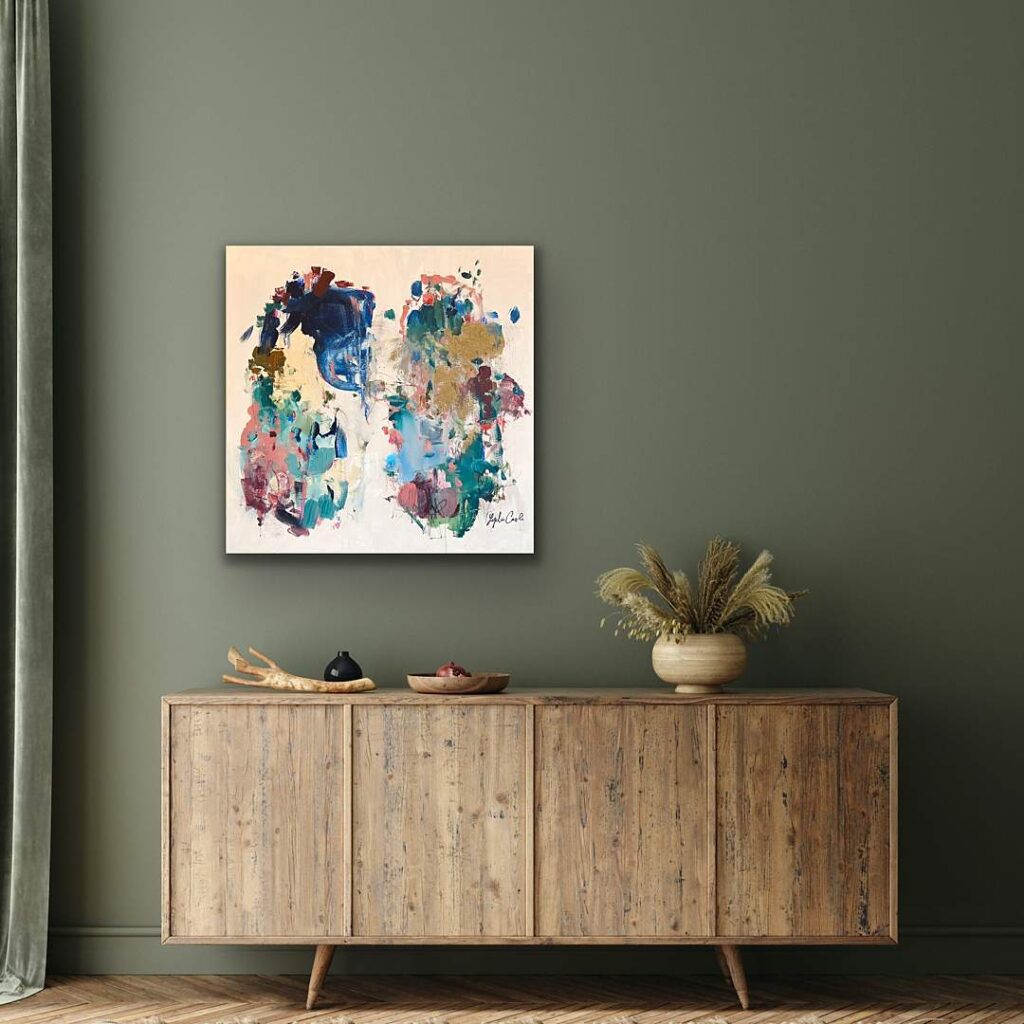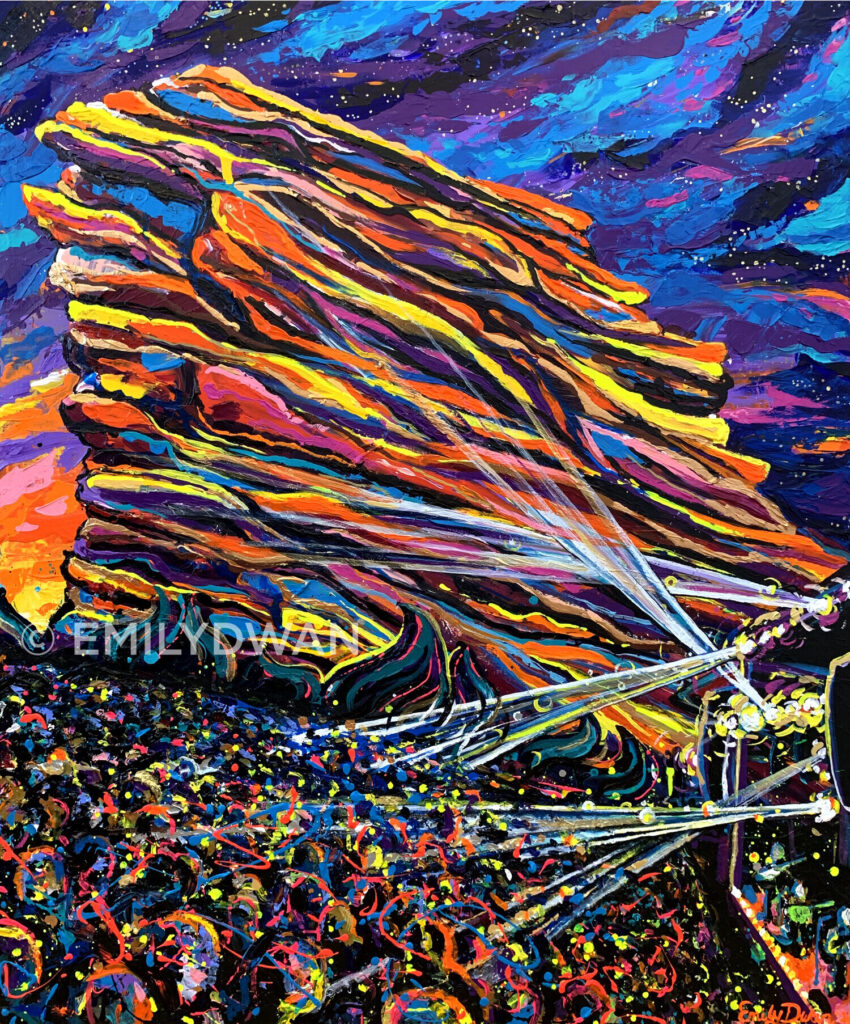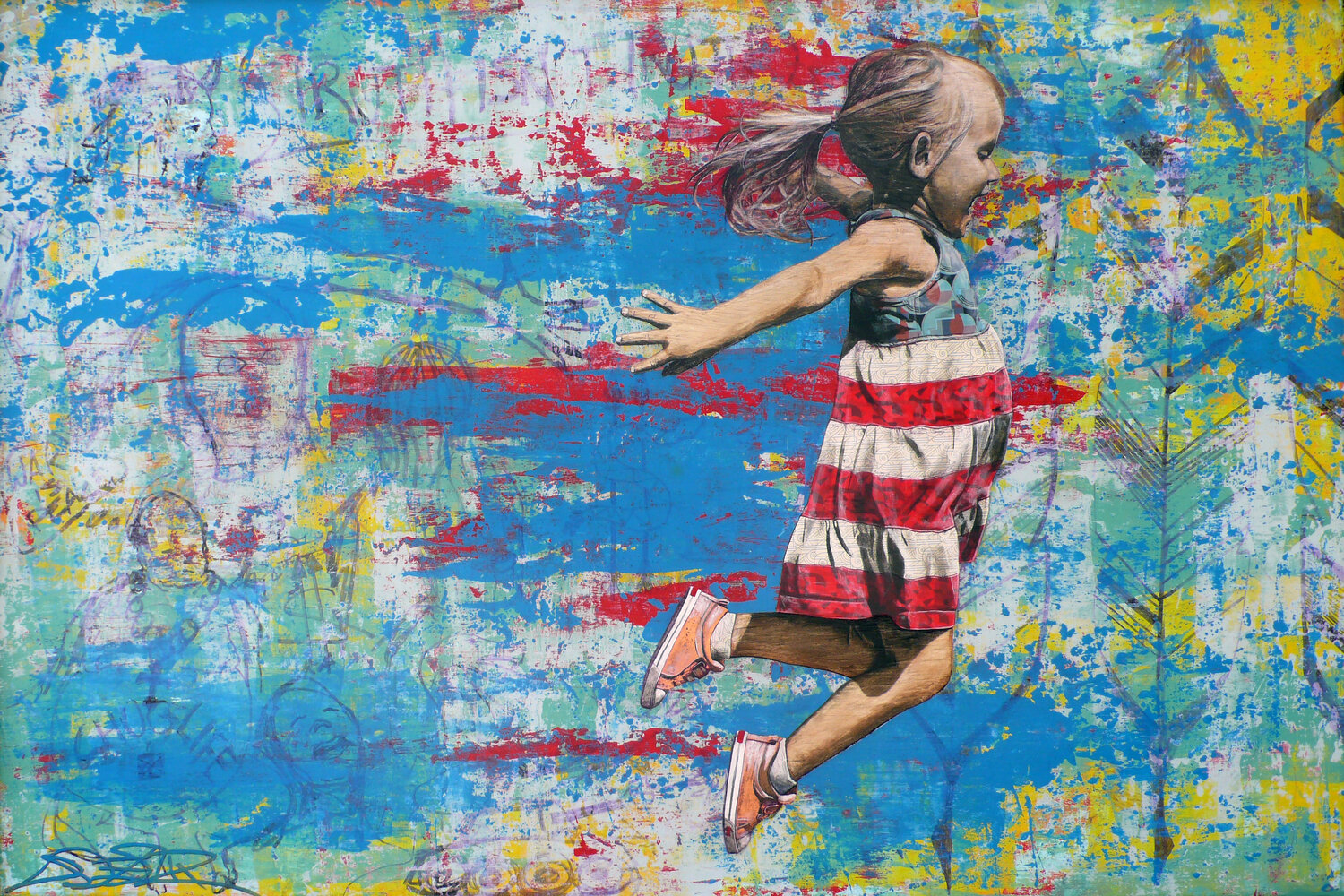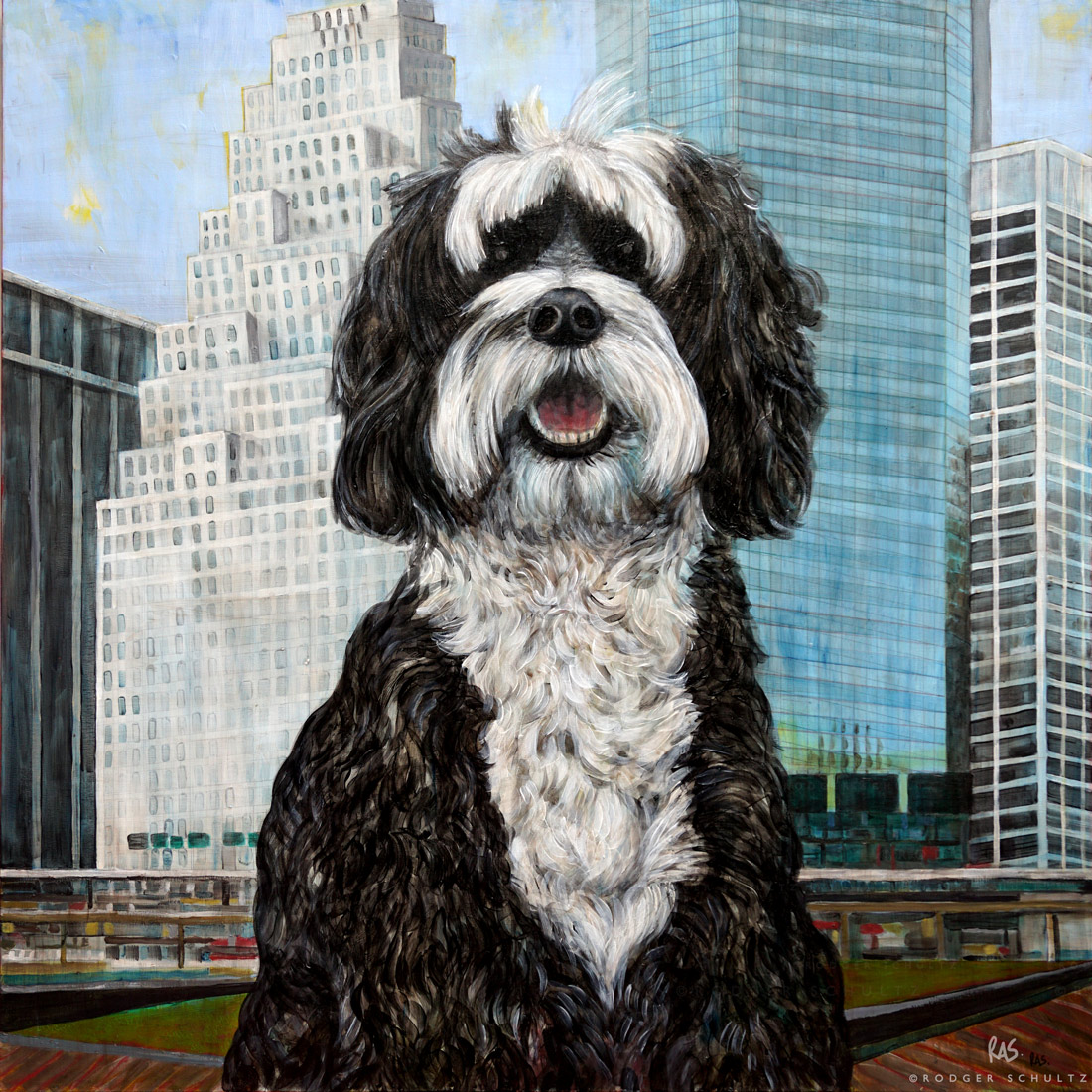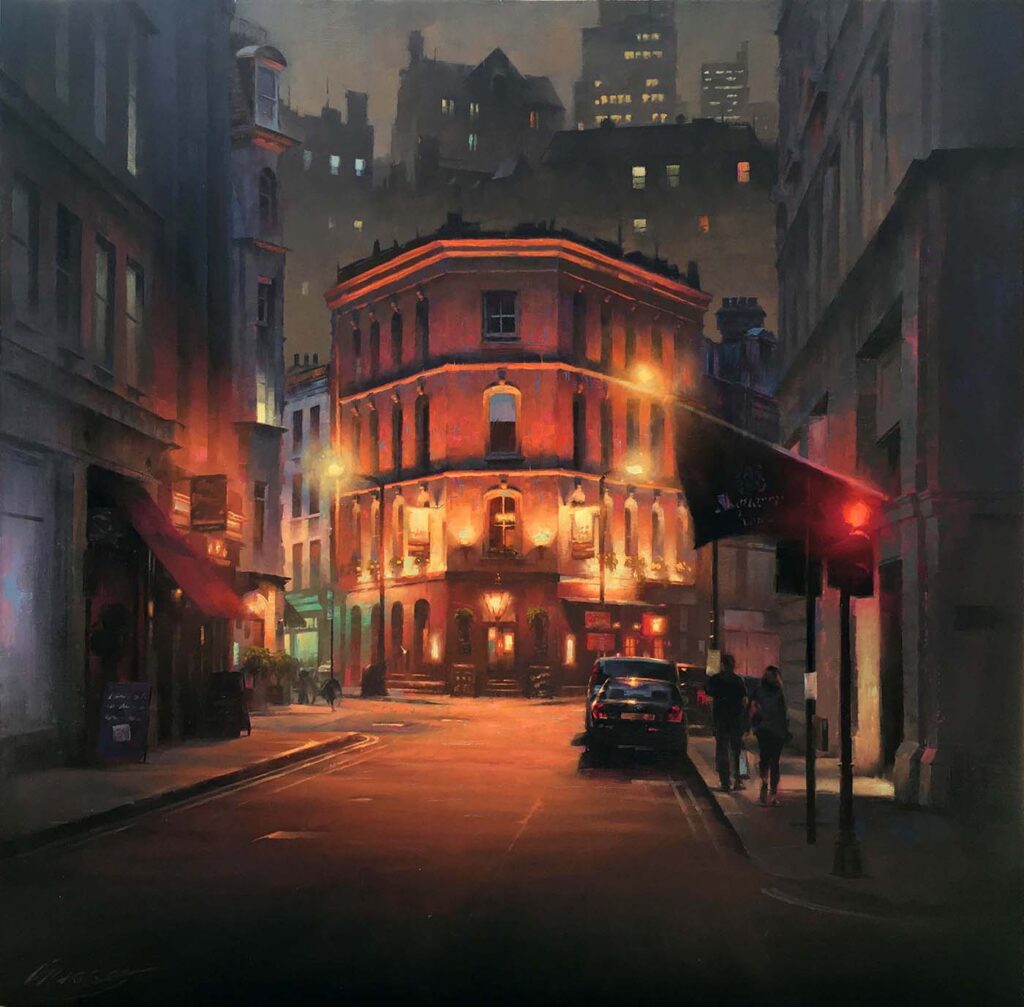Abstract Art – The Beauty of Interpretation
According to Ideel Art, “Abstraction isn’t a style or movement; it can exist in all art to a certain degree. Various dictionaries define Abstraction as ‘freedom from representational qualities in art’ and ‘not representing things pictorially’. The Tate describes it as when an artist has either ‘removed (abstracted) elements from an object to create a more simplified form’ or produced something which ‘has no source at all in external reality’.
While an artist may have something representational in mind when painting, that object might be stylized, distorted or exaggerated using colors and textures to communicate a feeling rather than to produce a replica. It’s more about how the beauty of shapes and colors can override representational accuracy. Abstraction is a ‘continuum.’”
As such, abstract art offers a great deal of flexibility in the commissioning space. It is a dance between the artist and buyer to blend a variety of criteria to create a painting that resonates.
With that said, abstract art is generally positioned within six key elements, line, texture, shape, form, color, and value. For the sake of the post, we will also discuss feeling/emotion.
Our mission at Teal Canvas is to feature a set of remarkable, diverse fine artists that are available to work within a variety of styles.
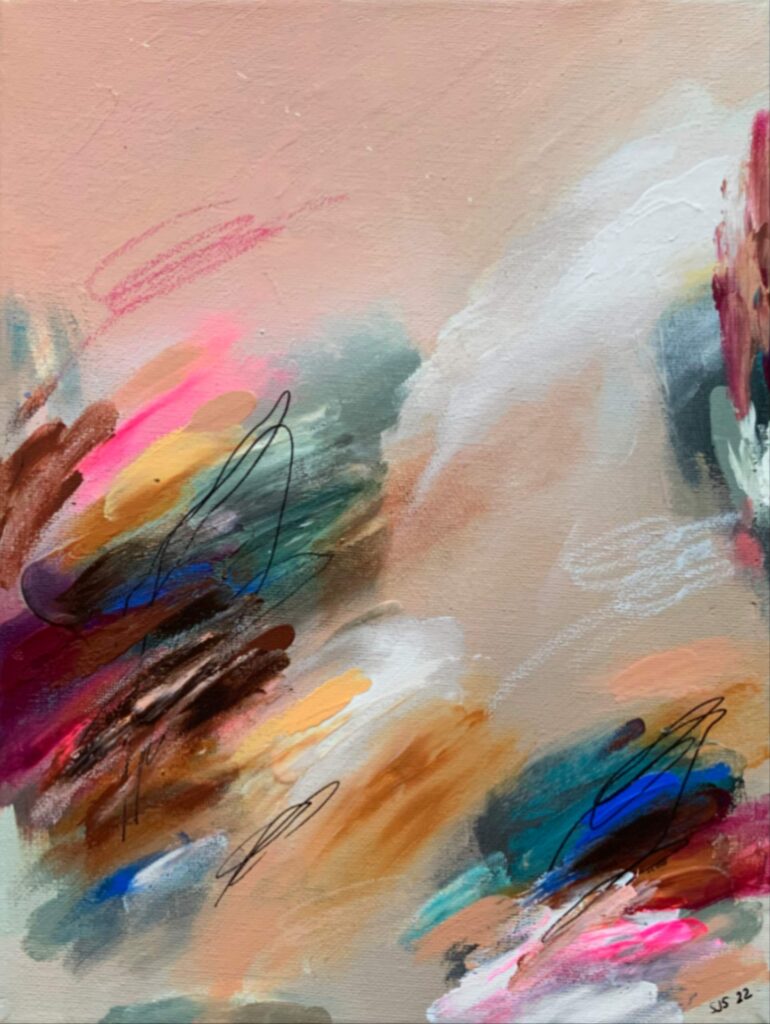
Line
Line is a point moving in space. Lines can vary from two to three-dimensional, continuous or broken, horizontal, vertical or diagonal. Lines are the cornerstone of any art piece and form the architecture of what that painting will become.
When commissioning, the line will define movement. A line can be smooth and harmonious or stark and directional. Look at the artist’s use of lines to give the piece a foundation.
Texture
Texture is how a painting looks or feels. An artist can play with texture, whether intentionally or in the throws of the creative process, to add a certain topographical element to the piece. Ideel Art states, “It can affect mood, evoke psychological associations, bring attention to a medium, or divert our focus toward materials used in a work. Used adeptly, texture can even challenge our perception of what is real.”
When commissioning, think about how the texture will enhance the look of the painting on the wall. An elevation difference can add a pop to a painting in a space.
Shape
Shape refers to the contents of the painting in a two-dimensional space, specifically when discussing height and width. ThoughtCo states, “A shape is created when a line is enclosed: a line forms the boundary, and the shape is the form circumscribed by that boundary. Line and shape are two elements in art that are nearly always used together. Three lines are used to create a triangle, while four lines can make a square.” The shape can be geometrical, with recognized uses of triangles, squares, etc., or can be more free-flowing. The shape defines the overall perception of a painting.
When commissioning, the shapes serve as the initial subject of the painting. As Shannon Kay shows below, the shapes, when put together, form the image of the woman in abstract.
Form
Form adds depth to shape, thus giving the abstract a 3rd dimension. For instance, in geometry, think of shape as the triangle, and form as the pyramid. In art, form gives the art a sense of space, whether a flower in the air or a cylinder floating in the canvas. In the painting above, Antoinette brilliantly plays with both geometric and natural form to add a signature depth to her abstract paintings.
When commissioning, balancing form and shape gives the painting a depth in space and will greatly enhance the painting as it presents in the home.
Color/Value
Color is defined by three key measures, hue, intensity, and value. Hue regards the actual name of the color. Intensity is the vividness of that color, whether it is bright and vibrant or dulled and neutral. Finally, value regards the lightness or darkness of that color. The value scale is found by adding either white or black to any color.
When commissioning, marrying color with the intensity and value of that color gives the painting its life. Depending on the décor of the home or office, abstracts can be done in a variety of colors or in a more monochromatic fashion. A painting can use a variety of colors with similar values, as represented by Jen’s painting below.
Emotion
The emotion that a painting elicits is undefinable; it is that feeling in your chest, the way the piece of art transports you, and the way the elements in a work combine to create a magical experience. Abstract artists have a deeply individual way of distorting life around them, merging the every day with the surreal, external objectivity with internal subjectivity.
When commissioning, the feeling of the painting, the emotion it brings, is of vital importance. Whether bringing feelings of calm, mystery, rage, or elation, the painting should feel like home to you and should feel wonderful in your home.
All of the above are elements that make a great abstract composition. Different styles of abstract art might resonate with you subconsciously based on the colors, form, texture, depth, etc.

